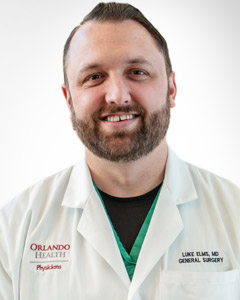Hernias occur when organs or fatty tissue squeeze through a weakened layer of tissue into another area of the body where they do not belong. A hernia can occur in various places in the body, such as the abdomen, groin, diaphragm or the site of a previous incision.
Repairing a Hernia
Repairing a hernia involves strengthening the weakened tissue area. This is done through surgery, closing the site of the hernia and, in certain cases, bolstering the area with a layer of surgical mesh.
In the past, this process was done through traditional open surgery, using larger incisions to open and reach the defect, and then placing the mesh. This procedure required significant recovery time and had an increased risk of complications from the wound and infection.
Laparoscopic surgery is another method used for hernia repair. Unlike traditional open surgery, laparoscopic surgery is minimally invasive, with small incisions made at the surgical site. Surgeons insert small instruments into the incisions and complete the procedure. A camera with 2D capability helps guide the surgeon during the procedure, but visibility and range may be limited.
Robotic surgery improves upon the capabilities of laparoscopic surgery. In addition to being minimally invasive, robotic surgery for hernias provides surgeons with increased precision, instrument control and accuracy during the procedure. Because robotic surgery is less invasive than open surgery, patients recover sooner, have less pain and need fewer narcotic pain medications. They may be discharged the same day versus staying in the hospital multiple days as with traditional open surgery.
How Robotic Surgery Works
Robotic surgery to repair a hernia is performed by a surgeon using the daVinci robot, which is comprised of three pieces of equipment.
- The first piece is the “brain” of the robot where the camera, power and energy are housed.
- The second piece of equipment is mobile and contains four arms that control small instruments and a small camera. This piece of the robot is placed next to the patient. The instruments and camera are passed through tiny incisions at the site of the surgery. Because of the small size of these devices, they can be used in many configurations, depending on the type of surgery and the area that needs to be accessed.
- The third portion of the robot is the console that is placed next to the patient and the surgeon. The surgeon looks at the 3D images from the camera (i.e. inside the abdomen for an abdominal hernia) and controls the arms of the robot using a system of hand controls that mirror the surgeon’s movements and foot controls that guide the camera and other tools.
Some people wonder if the robot actually performs the surgery. Not at all! The robot only performs the movements and commands controlled by the surgeon in real time. It cannot operate independently. The surgeon is in the room with the patient and sitting at the bedside console while other qualified assistants are at the bedside helping with the insertion and positioning of the robotic arms while the surgeon controls these instruments.
Benefits and Risks of Robotic Surgery
Using smaller incisions means patients recover faster and have fewer wound complications, a lower risk of infection and less pain. Because they have less pain, they don’t require as much pain medication. This enables surgeons to limit the use of narcotics while ensuring patient’s pain is controlled during recovery.
Surgeons appreciate the precision and accuracy the robotic method allows. By inserting a camera into the surgical site, they can more easily see the area in question and track all movements during the procedure.
With any surgical procedure, there are risks. But in qualified hands, the risks associated with robotic hernia repair surgery are very similar to those associated with laparoscopic hernia surgery.
Those risks include:
- Complications from general anesthesia needed for the procedure
- Bleeding and infection both at the level of skin and down in the abdomen
- Injury to structures in the abdomen, such as organs, intestines, blood vessels, bladder and nerves
- Complications from the insertion of mesh that is required to help lower the risk of recurrence of the hernia
These risks are all very low and the benefits of the less invasive methods typically outweigh the concerns.
While the robot has many applications and is a great option for many of our patients, it is not the right tool for everyone. Certain types of hernias, other medical illnesses or previous surgeries are factors to consider when deciding if a patient is a candidate for robotic surgery. Ultimately, it is the joint decision of the surgeon and the patient to determine which repair of the hernia will be the safest and most effective long-term.





